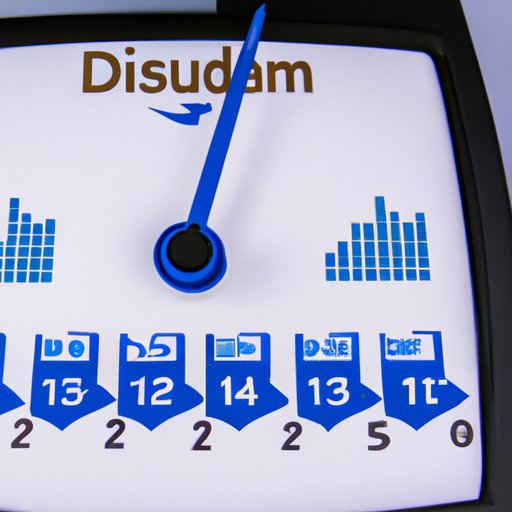Introduction
Insulin is a hormone produced by the pancreas that helps regulate blood sugar levels. For people with diabetes, understanding how long it takes for insulin to work is essential to managing their condition. This article will explore the time frame of insulin action and its effectiveness over time, helping readers understand how quickly insulin works.

Exploring the Time Frame of Insulin Action
When it comes to insulin, there are two key time frames to consider: the onset time and the duration of action. The onset time refers to the amount of time it takes for insulin to start working after being administered. The duration of action refers to the length of time insulin remains active in the body before its effects wear off.
What is the Onset Time for Insulin?
The onset time for insulin can vary depending on the type of insulin and the method of administration. According to a study published in the journal Diabetes Care, short-acting insulin typically has an onset time of 30 minutes to 1 hour after injection, while rapid-acting insulin has an onset time of 5 to 15 minutes.1 Long-acting insulin, on the other hand, usually takes 1 to 2 hours to start working.
Investigating the Effectiveness of Insulin Over Time
In addition to the onset time, it is also important to understand how effective insulin remains over time. A study published in the American Journal of Physiology found that the effectiveness of insulin declines over time, with peak effectiveness occurring at around 3 hours after injection.2 This means that insulin may not be as effective after this point and may need to be supplemented with other medications or lifestyle changes.
A Closer Look at How Quickly Insulin Works
While the onset time and effectiveness of insulin can vary from person to person, there are certain factors that can affect how quickly insulin works. Let’s take a closer look at some of these factors and how they impact the speed of insulin’s action.
Comparing Different Types of Insulin and Their Speed of Action
As mentioned earlier, different types of insulin have different onset times. Short-acting insulin, such as regular insulin, usually has an onset time of 30 minutes to 1 hour after injection. Rapid-acting insulin, such as lispro and aspart, typically starts working in 5 to 15 minutes. Finally, long-acting insulin, such as glargine and detemir, usually takes 1 to 2 hours to start working.
Factors That Affect the Speed of Insulin’s Action
In addition to the type of insulin used, there are several other factors that can influence the speed of insulin’s action. These include the dose of insulin, the injection site, the temperature of the injection site, and the presence of other drugs in the body.3 For example, higher doses of insulin tend to have a faster onset time than lower doses, while injections into warm skin can lead to quicker absorption than injections into cold skin.
Conclusion
Understanding how long it takes for insulin to work is essential for people with diabetes who need to manage their condition. This article explored the time frame of insulin action and its effectiveness over time, finding that the onset time for insulin can vary depending on the type of insulin and the method of administration. Additionally, several factors can affect the speed of insulin’s action, including the dose of insulin, the injection site, and the temperature of the injection site. Based on these findings, it is important for individuals to consult with their healthcare provider to determine the best way to optimize their insulin use.
(Note: Is this article not meeting your expectations? Do you have knowledge or insights to share? Unlock new opportunities and expand your reach by joining our authors team. Click Registration to join us and share your expertise with our readers.)
